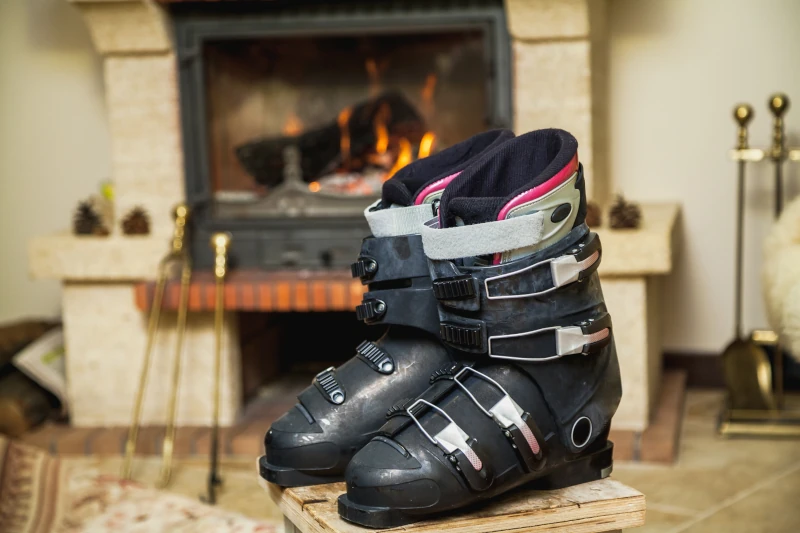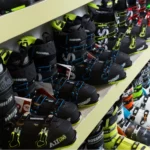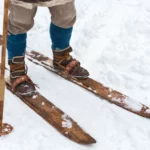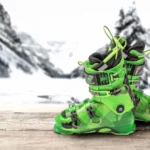How To Dry Ski Boots: 6 Ways to Deal with Damp Ski Boots


Dry ski boots are essential for comfort and warmth on the slopes. Damp boot liners can turn a great ski day into a miserable one.
Effectively drying your ski boots also prevents the growth of bacteria, mold and mildew, which can be harmful to your health and that of the boots, and can cause unpleasant odors.
Finally, dry boots maintain their shape and provide better support, enhancing your skiing performance. Regular drying helps preserve the boots’ materials, extending their lifespan and ensuring a consistently comfortable and effective fit.
6 Ways to Dry Ski Boots
Ski Boot Dryer
A ski boot dryer is one of the most effective ways to dry ski boots. These devices circulate warm air through the boots, quickly and effectively removing moisture from both the liner and shell.
There are some downsides to ski boot dryers. One is that they can be expensive. If used improperly, they can damage the boots by warping the material, which can affect the fit of the boot. What’s more, they require a power source, which might not always be convenient or available, especially in remote backcountry ski locations or during travel.
Despite these challenges, for many skiers, the pros of using a ski boot dryer outweigh the cons and make it a valuable tool in ski boot maintenance.
Fan
Using a standard fan to dry ski boots is a simple and effective method. You only need to set up the fan to blow air directly into or around the boots. This will enhance the air circulation around the boot and significantly speed up the drying process. And because you won’t be using heat, the risk of damaging or altering the boot material is reduced.
However, this method might not work well in humid environments as the surrounding air will not be able to absorb the excess moisture. Additionally, depending on the model, a fan can be bulky and require a power source. However, a fan remains a popular choice for drying ski boots due to its simplicity and gentle drying process.
Newspaper or Rice
Materials like newspapers or rice work by absorbing moisture from the boots. Newspapers can be stuffed directly inside the boots, while rice can be put inside a sock and then placed inside the ski boot. Some skiers recommend microwaving the rice-filled sock for several minutes before placing it in the boot to speed up drying.
These methods are cost-effective, environmentally friendly, and don’t require electricity, making it ideal for situations where power sources are unavailable. However, it can be less efficient in terms of time, often taking overnight or longer to fully dry the boots, depending on the level of dampness. The process can be messy, especially with newspaper ink potentially staining the interior of the boots, and it may not be as effective for extremely wet boots.
These methods are gentle and unlikely to cause damage to the boots; however, the longer drying time and potential mess are notable drawbacks. Also, most people don’t travel with an ample supply of rice and newspapers, so this may not be a convenient approach if skiing away from home. Still, using absorbent materials remains a viable option for those seeking a simple and eco-friendly way to dry their ski boots.
Space Heater or Fireplace
Placing ski boots near a heater or fireplace is a simple way to dry them, but this method requires caution. The heat helps to evaporate moisture quickly from both the liners and shells, potentially reducing drying time significantly compared to air-drying methods. This approach is convenient, especially in cold climates where a heat source is readily available.
However, the major downside is the risk of damaging the boots. Excessive heat can warp or melt parts of the boot, particularly if they are made of sensitive materials like plastic or synthetic fabrics. Direct or prolonged heat exposure can also cause the boots to lose their shape or fit, ultimately affecting performance and safety.
Drying time can vary but could be as short as a few hours; however, constant monitoring is essential to prevent damage. While this method can be quick, the potential risk to the boots makes it less favorable compared to safer drying methods.
Warm Room
Placing ski boots in a warm room is a gentle and effective drying method. Ambient warmth will help speed up the evaporation of moisture. This method poses minimal risk of damaging the boots, as it avoids direct heat sources that can warp or alter the materials.
This method can be slower compared to more direct drying techniques like boot dryers or fans. Ultimately, the drying time will depend d on room temperature and humidity levels. It may take several hours or even all night to completely dry your boots
Air dry
Air drying ski boots is the most straightforward and natural method, relying on ambient air to evaporate moisture. However, it’s also the slowest method, typically taking overnight or even several days. The effectiveness of air drying can be significantly impacted by the ambient air’s humidity and temperature. While it’s the safest method for the boots, its major drawback is the time it takes, which may not be suitable for skiers needing a quick turnaround.
Tips and Tricks to Speed Up the Drying of Ski Boots
- Remove Liners : If possible, remove the liners from the ski boots. This increases air circulation to both parts of the boot, allowing them to dry more quickly and thoroughly.
- Turn Them Upside Down : If the liners are attached, hanging the boots upside down can help the moisture drip out, aiding in faster drying.
- Shake Them Out : Before drying, shake out any snow or excess water. This simple step removes surface moisture and speeds up the overall drying process.
- Open All Buckles : Loosen up any straps and buckles. This opens the boots up as much as possible, allowing for better air circulation.
- Wipe with a Towel : Dry the shell and liner with a towel to help soak up any significant water and moisture droplets.
- Rotate Between Pairs : If you ski frequently, having two pairs of boots allows you to rotate between them, giving each pair ample time to dry.
Conclusion
Drying ski boots plays a crucial role in providing a comfortable skiing experience. Various methods offer different benefits and drawbacks. While ski boot dryers and fans provide a quicker solution, natural methods like absorbent materials or air drying are less likely to damage the boots. The key is to balance cost and the need for quick drying with the potential risks.
Simple tips like removing liners, opening all buckles or wiping with a towel can significantly aid in speeding up the process, ensuring your ski boots are dry, comfortable and ready for your next skiing adventure.




